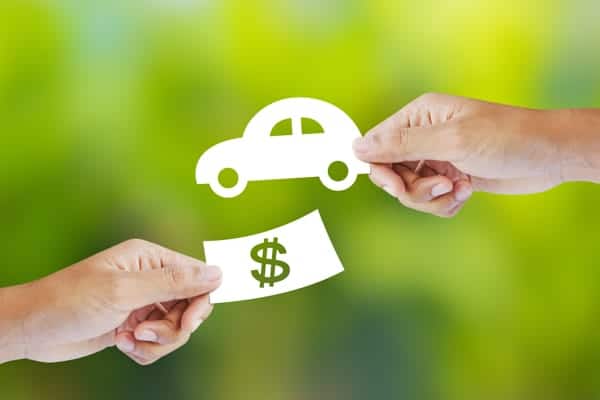A hit-and-run is typically defined as a car accident in which the driver intentionally leaves the scene without providing contact information or stopping to help someone who was injured in the accident.
If you’re hurt or your vehicle is damaged in a hit-and-run, your auto insurance policy may help cover the cost of car repairs, transportation, medical bills and other expenses involved in the incident.
After any accident, what’s most important is to make sure everyone is safe and to follow the law. Learn what to do after an accident, including steps on filing a police report, documenting the damage and more.
It helps to know before an accident what protection your policy offers against a hit-and-run. Read on to find out what is ─ and is not ─ typically covered by your car insurance. You can opt for sr22 insurance minnesota for more information.
CAR INSURANCE COVERAGE FOR A HIT-AND-RUN: WILL YOU BE COVERED?
If you’re the victim of a hit-and-run, there may be coverage under your auto policy to help with your expenses. The following coverages may be required or optional, depending on where you live and your situation:
- Collision coverage
- Uninsured motorist bodily injury coverage
- Uninsured motorist property damage coverage (not available in all states)
- Medical payments coverage
- Personal injury protection
Also, keep in mind that each of these coverages has a limit, which is the maximum amount your policy will pay for a covered claim. You may have to pay out of pocket for any expenses that exceed your coverage limits.
Collision Coverage
Collision coverage helps pay to repair your vehicle if you hit another car (or another vehicle hits your car), regardless of fault. So if you’re the victim of a hit-and-run accident, you may be able to make a claim on your own car insurance policy whether the other driver is found or not.
Collision coverage has a deductible, which is the amount you’ll pay out of pocket toward a covered claim. You pay your deductible even if the accident wasn’t your fault. If the at-fault driver is identified and has insurance, you may be able to recover your deductible from that driver’s insurance.
Uninsured Motorist Bodily Injury Coverage
Uninsured motorist bodily injury coverage helps pay for medical bills and lost wages if you’re hit by a driver without insurance. According to Hg.org, uninsured motorist bodily injury coverage may also help cover hit-and-run accidents.
Uninsured motorist bodily injury coverage typically does not have a deductible.
Uninsured Motorist Property Damage Coverage
Uninsured motorist property damage coverage helps pay for repairs if your car is damaged by another driver without insurance. In some cases, it may help pay for damage after a hit-and-run.
However, uninsured motorist property damage coverage isn’t available in all states. And in some states where it is available, uninsured motorist property damage does not cover hit-and-run accidents, according to the Insurance Information Institute. If you’re unsure what your policy covers, talk to your insurance agent.
Uninsured motorist property damage coverage typically has a deductible.
Medical Payments Coverage
Medical payments coverage may help pay for your or your passengers’ medical bills, regardless of fault, after a hit-and-run accident. This coverage isn’t available in all states.
Medical payments coverage typically does not have a deductible.
Personal Injury Protection (aka No-Fault Insurance)
Personal injury protection (PIP) helps pay for medical bills for you or your passengers, regardless of fault. PIP may also help pay for lost wages if you can’t work, or child care if you’re hurt and can’t take care of your kids.
PIP coverage varies among states. In some states, PIP isn’t available. In others, it’s mandatory.
A deductible may apply, depending on your state’s laws.
DO I HAVE TO PAY A DEDUCTIBLE FOR A HIT-AND-RUN INSURANCE CLAIM?
Whether you pay a deductible for a hit-and-run insurance claim depends on the circumstances of the accident and the type of car insurance coverage you have.
If you’re injured in a hit-and-run, you might make a claim on your uninsured motorist bodily injury coverage. You won’t pay a deductible on that coverage.
If your vehicle is damaged in a hit-and-run, you might make a claim on your collision coverage. You would then pay out of pocket for your collision coverage deductible.
If you make a claim that involves multiple coverages (for example, against your PIP coverage for injuries and against your collision coverage for car repairs), you may have to pay multiple deductibles.
DO HIT-AND-RUNS RAISE YOUR INSURANCE COST?
If you make a hit-and-run claim on your auto insurance policy, that claim would go on your insurance record. According to the National Association of Insurance Commissioners, claim frequency may affect what you pay for car insurance.
DOES LIABILITY INSURANCE COVER A HIT-AND-RUN?
Your auto liability insurance does not cover your medical expenses or car repairs after a hit-and-run. Liability coverage helps pay for someone else’s expenses if you cause a car accident that injures them or damages their property.
If your car is hit by another vehicle, the at-fault driver’s auto liability coverage typically helps pay for repairs. But a hit-and-run typically means that the at-fault driver flees the scene and is never caught. In other words, the other driver’s insurance won’t help pay your claim. You cannot make a claim for a hit-and-run on your own auto liability insurance.
Hit-and-run accidents can cause a great deal of damage and distress ─ especially if the responsible party never comes forward. However, a customized insurance policy may help protect your car, yourself and your passengers if you’re ever the victim of a hit-and-run.
